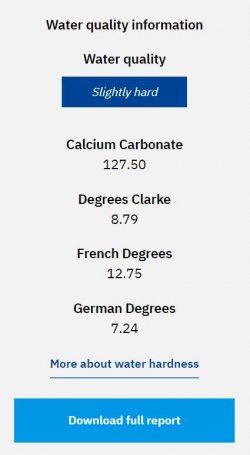I'm using the NT Labs Pro-f test kit to check my water.
I'm fine with the Ammonia, Nitrite & Nitrate but get stuck understanding the rest of the things.
This is what each of the test show.
KH turns green after 19 drops
GH turns blue after 20 drops
pH turns a very light blue with the dosage required. This colur isn't shown on the chart though, but perhaps it's somewhere between yellow (7) and green (8). I've done tjhis particular test 3 times just to confirm the odd colour and it's the same on each.
So, the question is, how does this set of results relate to water parameters found on the likes of seriouslyfish.com
I'm thinking of adding neon green rasboras to my setup as a single species tank. so need to know what I'll have to do to keep them in prime condition
I'm fine with the Ammonia, Nitrite & Nitrate but get stuck understanding the rest of the things.
This is what each of the test show.
KH turns green after 19 drops
GH turns blue after 20 drops
pH turns a very light blue with the dosage required. This colur isn't shown on the chart though, but perhaps it's somewhere between yellow (7) and green (8). I've done tjhis particular test 3 times just to confirm the odd colour and it's the same on each.
So, the question is, how does this set of results relate to water parameters found on the likes of seriouslyfish.com
I'm thinking of adding neon green rasboras to my setup as a single species tank. so need to know what I'll have to do to keep them in prime condition
Last edited:


